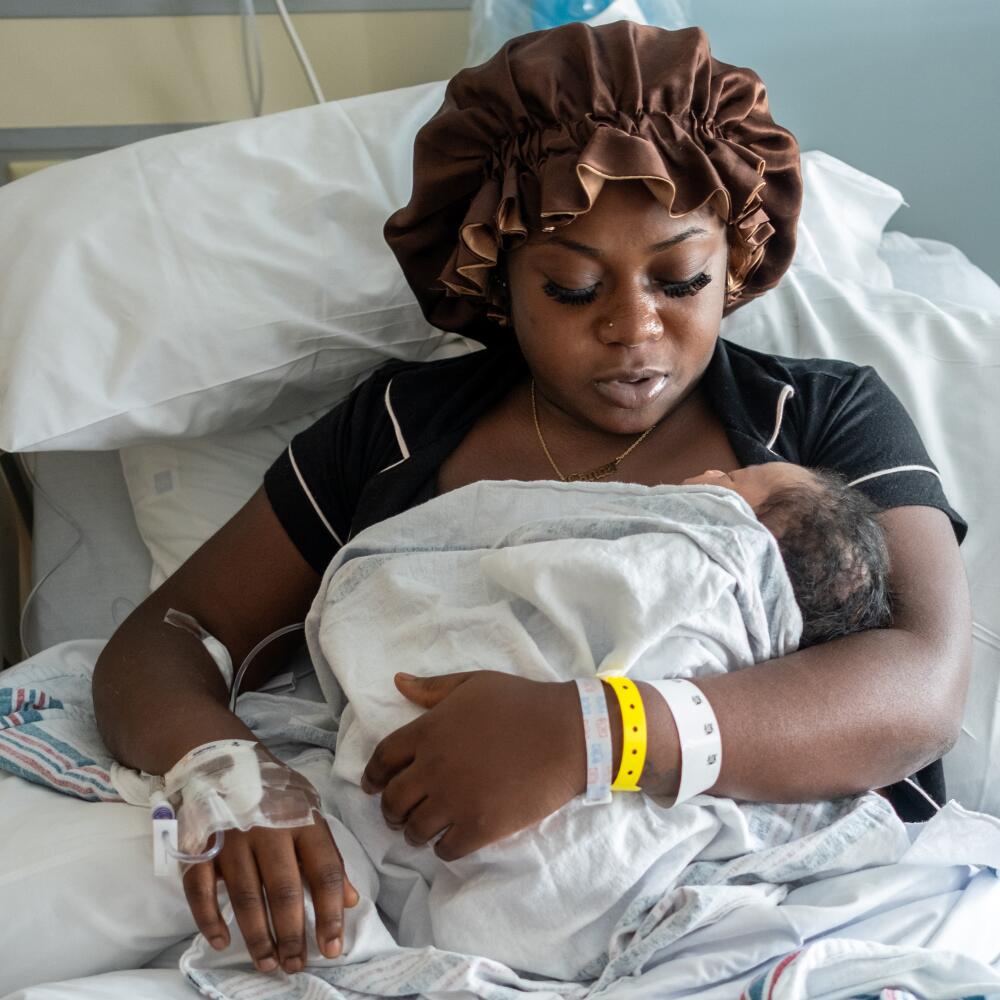
Brianna Mckenzie was feverish and shaking in her bed as night drew near at MLK Community Hospital.
The pregnant woman was a week and a half past her due date. She had come to the Willowbrook hospital to be induced a day beforehand and was only halfway to the needed dilation. Her mother, Francine Tomlinson, had grown anxious, knowing that fever could be a sign of an infection.
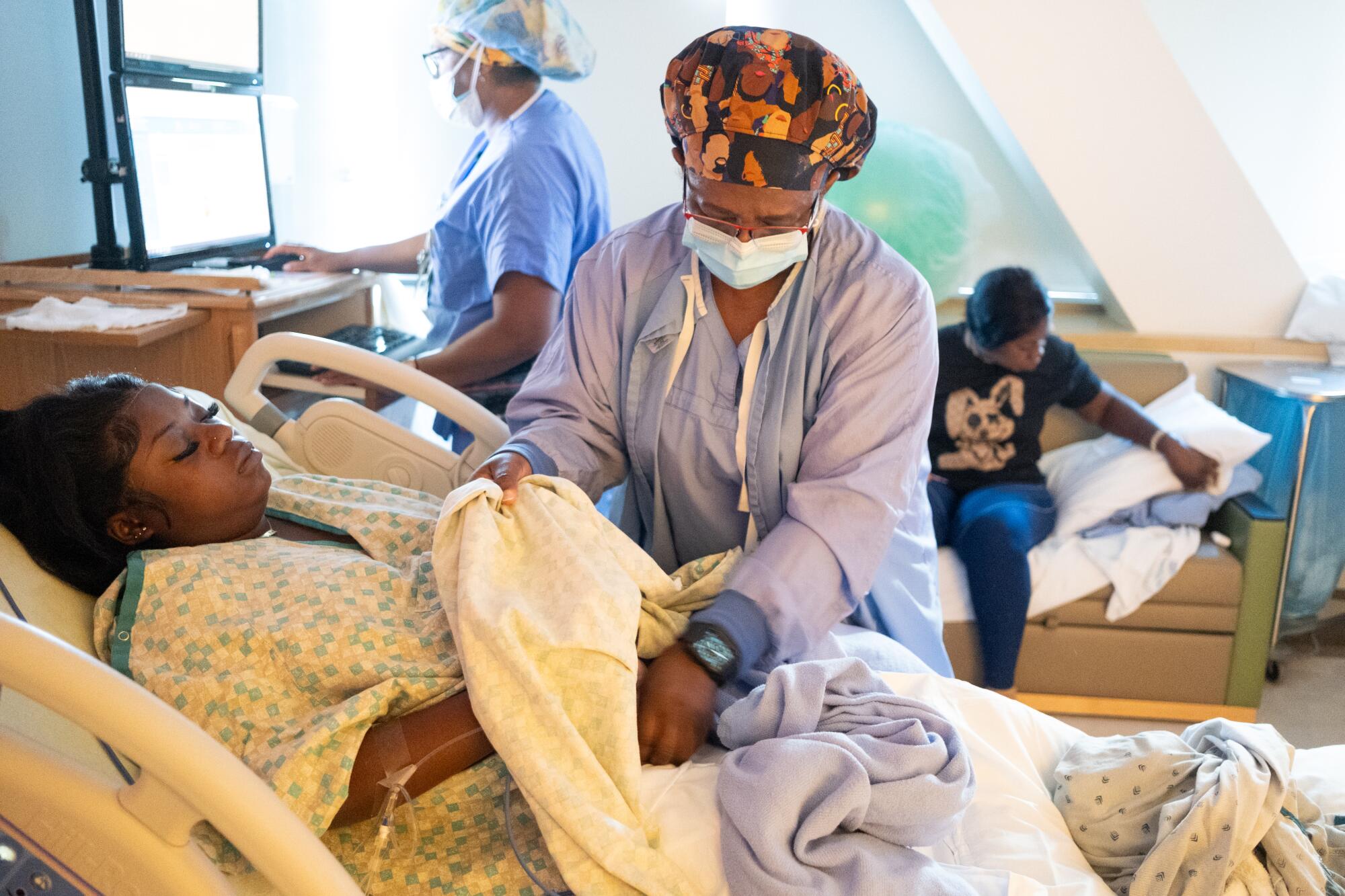
As Tomlinson worried over her daughter, obstetrician Dr. John Pinches III stepped into the room and laid out the decision before Mckenzie, explaining the trade-offs of a cesarean section or continuing with labor. She’d been given antibiotics to quash any infection and Tylenol for her fever, but Tomlinson urged her daughter to consider a C-section.
Her fears and anxiety were underscored by the unsettling statistics surrounding birth in the United States. Black women like Mckenzie have been at much higher risk of dying in pregnancy and childbirth than women of other races in the U.S. — a country where birth is already far more dangerous than in many other wealthy nations.
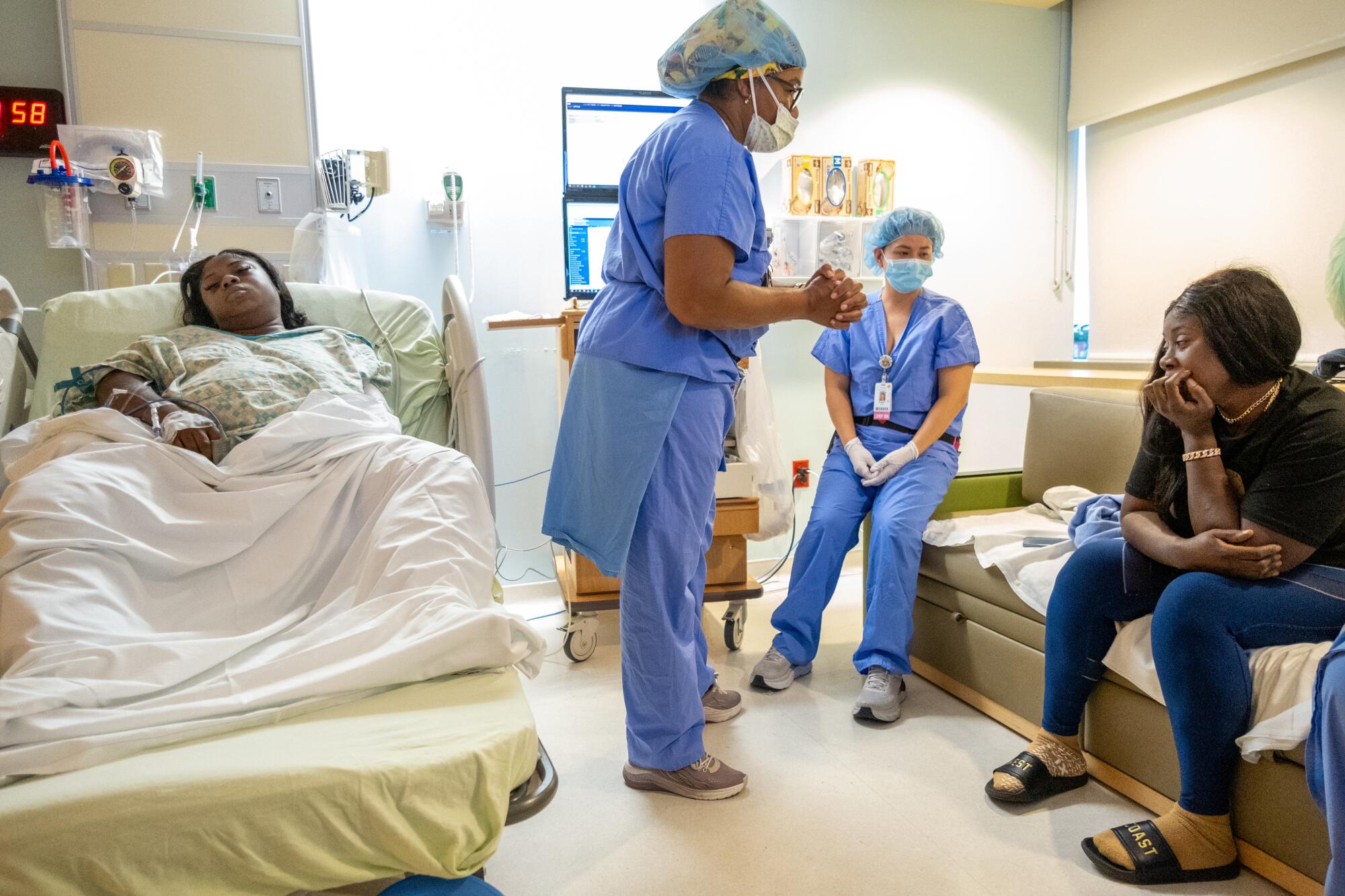
As Mckenzie weighed her options, Angela Sojobi, the midwife who had been tending to the 23-year-old throughout the day, sought to reassure her mother. “We will not let anything bad happen to her,” Sojobi told Tomlinson, sitting down next to her. “That’s why I’m here, watching her like a hawk.”
Mckenzie decided to continue with her labor. Less than five hours later, she was pushing out her newborn son, surrounded by her mother, her partner and the hospital team. Sojobi coached her through each push, her tone steady and soothing: “What a strong woman. Take a breath. You’re almost done.”
At midnight, Mckenzie pushed once more before Sojobi lifted the wailing infant to his mother’s chest.
“He is so gorgeous!” Sojobi exclaimed. “Look at what you did, Brianna!”
It was a euphoric ending that should be unremarkable: A woman safely bringing a baby into the world. But the way MLK Community Hospital is trying to improve the birthing process for its patients remains far from the norm, and hospital officials fear it could be difficult to sustain.
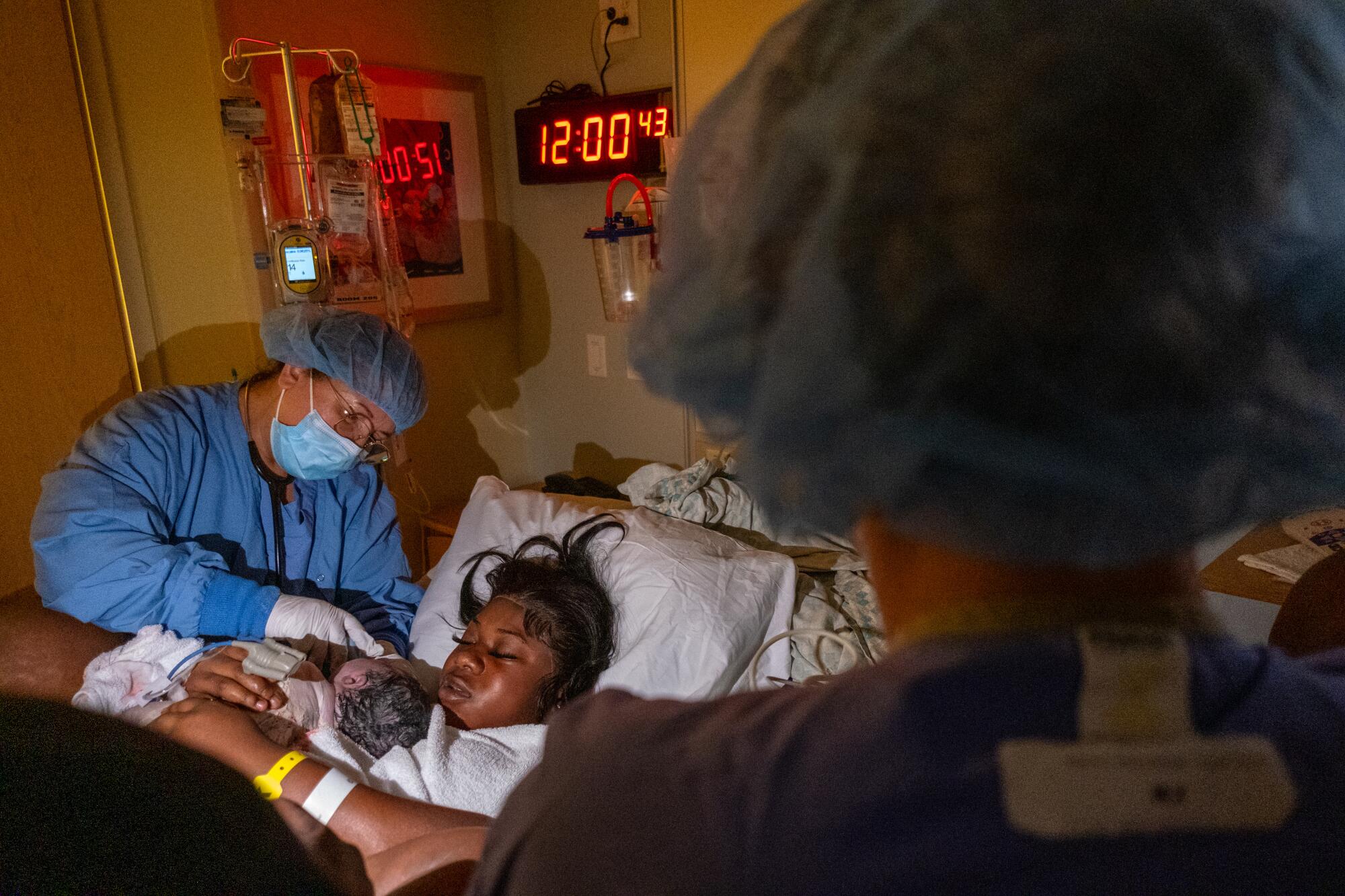
Since it opened its doors eight years ago, the South Los Angeles-area hospital has relied on certified nurse midwives like Sojobi — nurses with graduate-level training in pregnancy and childbirth — working together with obstetricians to manage labors. Midwifery proponents point to evidence that such births are associated with fewer C-sections and preterm births. But as of 2021, only about 10% of hospital births in the U.S. were attended by midwives, according to the National Center for Health Statistics.
At MLK, a certified nurse midwife is routinely at the hospital to guide normal labors, collaborating with an obstetrician who is on site to handle patients who are at high risk or face medical complications during their delivery. Hospital officials said they are trying to give South L.A. patients the best of both worlds: the support of a trained and empathetic nurse midwife and the emergency capabilities of an obstetrician if something goes wrong.
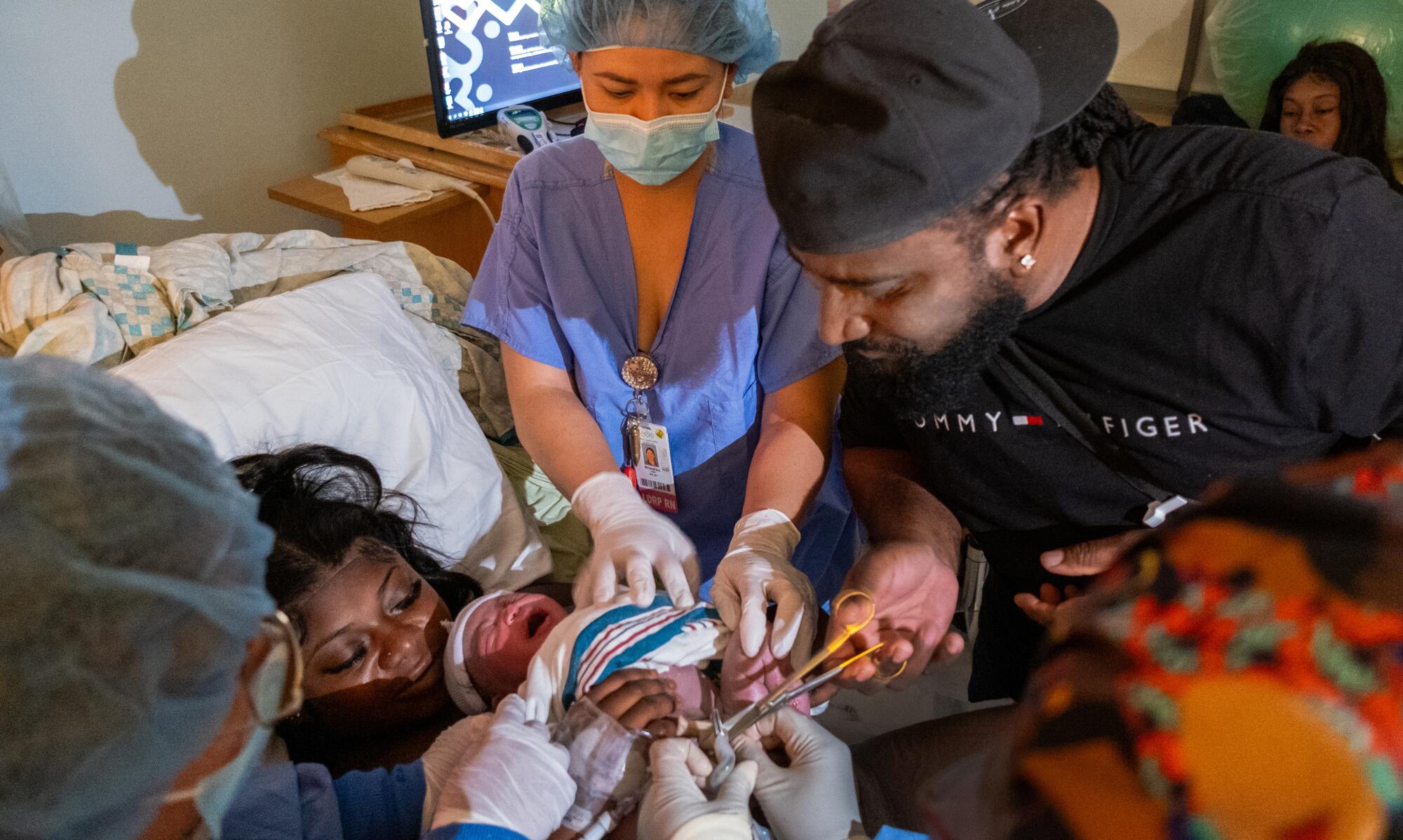
“Most labors start out as a natural process, and a midwife is good at that,” said Dr. Danny Dan, an OB-GYN at MLK. If a birth can proceed without interventions, he said, clinicians can avoid the risk of complications connected to those interventions, which must be weighed against their possible benefits.
“The problem is, when labor turns bad, it turns bad very quickly,” Dan said. In general, “you really don’t need a doctor — until you need a doctor.”
Holly Smith, health policy chair of the California Nurse-Midwives Assn, said that in California, having both midwives and obstetricians working full time has typically been more common at bigger entities such as Kaiser Permanente than at a smaller hospital like MLK, especially one serving a disadvantaged community. MLK officials credit round-the-clock staffing with an OB and midwife with driving its notably low rates of C-sections and episiotomies, measures widely used to gauge the quality of maternal care.
Roughly 14% of its first-time, low-risk births involved a C-section, compared with about 23% of such births statewide, according to statistics gathered by Cal Hospital Compare. Hospital data provided by Sojobi also indicate that most newborns at MLK are in good condition shortly after birth, based on a common metric used to assess newborns.
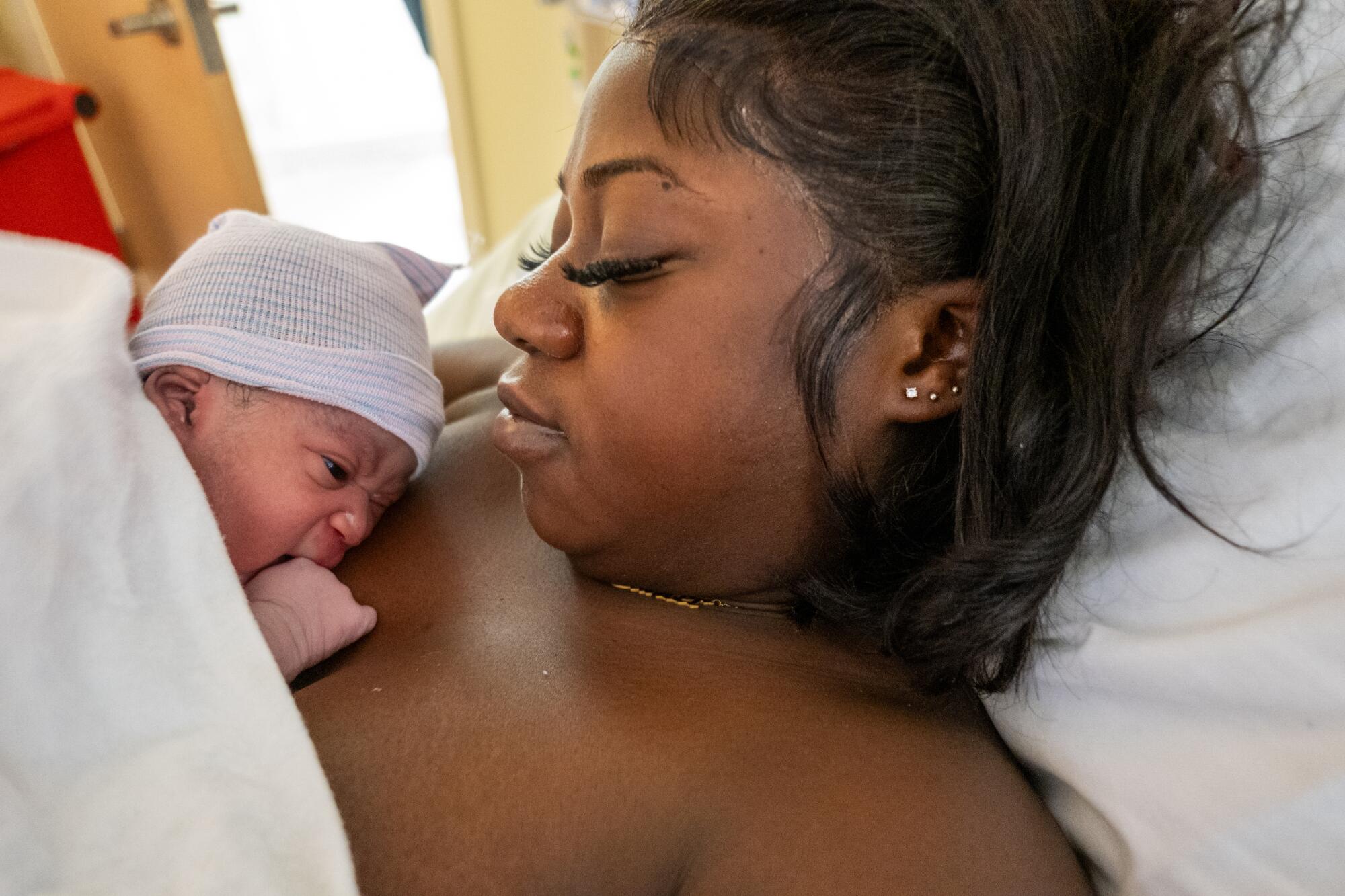
“We allow the body to do what it does best,” Sojobi said. Medical staff will not hesitate to intervene when needed, she added, but “when we intervene unnecessarily in a normal process, that’s when we end up with problems.”
Midwifery has also been promoted as a way to provide more sensitive and individualized care, an especially urgent concern for Black women. Thirty percent of Black women reported mistreatment during maternity care and 40% reported discrimination, according to a Centers for Disease Control and Prevention analysis of a national survey — rates markedly higher than among white women surveyed.
Listening to women and taking their pain seriously “sounds so basic, but it can literally save people’s lives,” said Jessica Wade, a maternal and infant health manager with the March of Dimes in California.
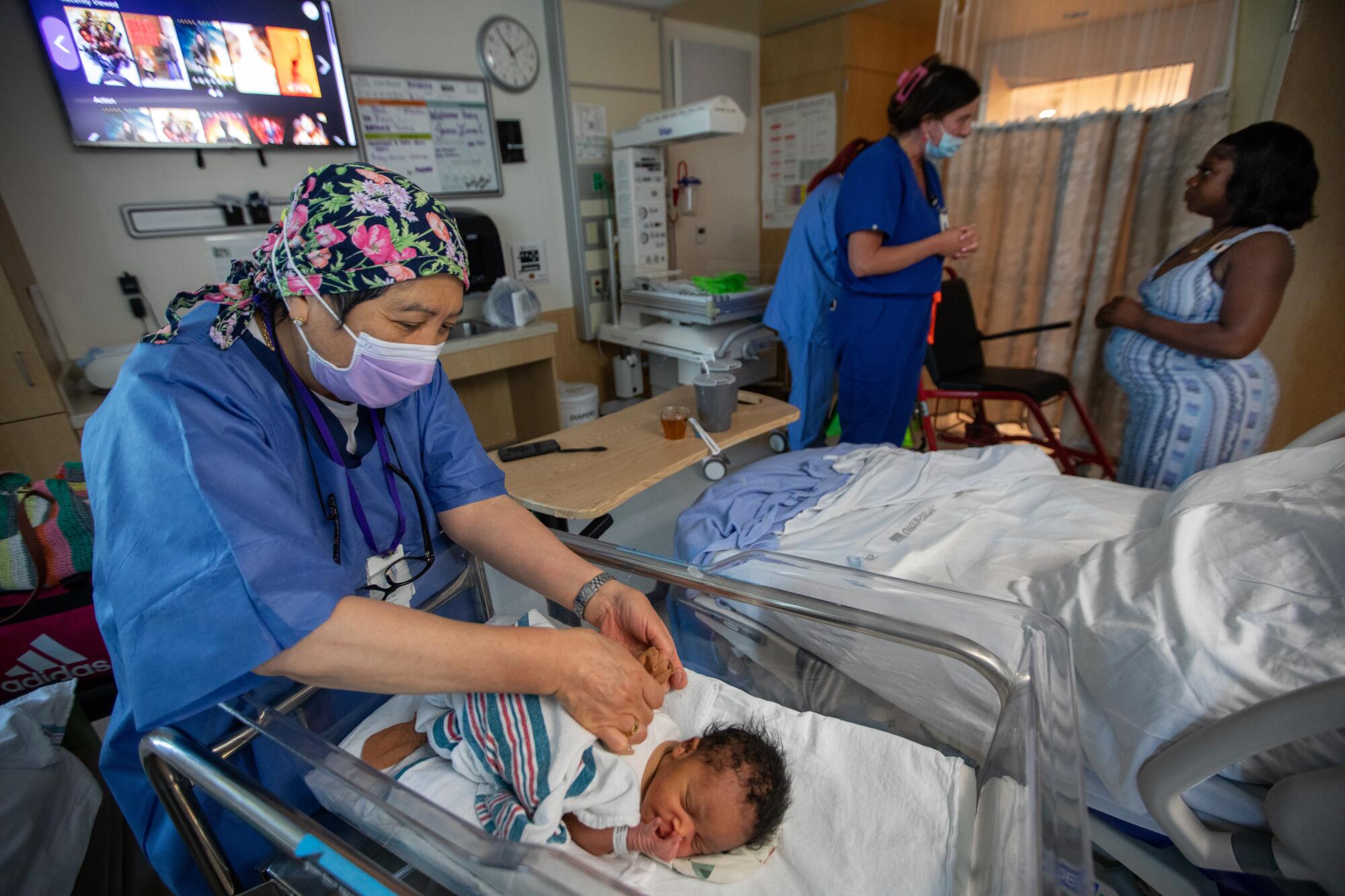
In California, Black mothers have been the most likely to express interest in having a midwife in the future — and the least likely to have worked with one, according to a Commonwealth Fund analysis. Midwives are far more common in many other wealthy countries than the U.S., where midwifery was historically marginalized as birth care shifted to hospitals. One famed obstetrician denounced midwives in 1915 as “a drag on the progress of the science and art of obstetrics.”
Midwifery has regained some ground since then, but many patients remain unable to access such care due to insurance barriers, regulatory restrictions, or a shortage of providers. Cultural acceptance of the role of midwifery is “inconsistent,” said Kim Q. Dau, co-specialty coordinator of the nurse midwifery education program at UC San Francisco School of Nursing, and “it is really hard to keep up with workforce demands” with only two programs educating nurse midwives across the state.
Dr. Neel Shah, a Harvard Medical School visiting scientist focused on maternal health, argued that everyone who is giving birth can benefit from support, monitoring and coaching. Some patients also benefit from medical technology like epidurals, and a minority benefit from surgeons, “which is what obstetricians are.”
In the U.S., “it’s the opposite,” he said, “Everyone gets the surgeon ... and the thing we’ve forgotten about is the support.”
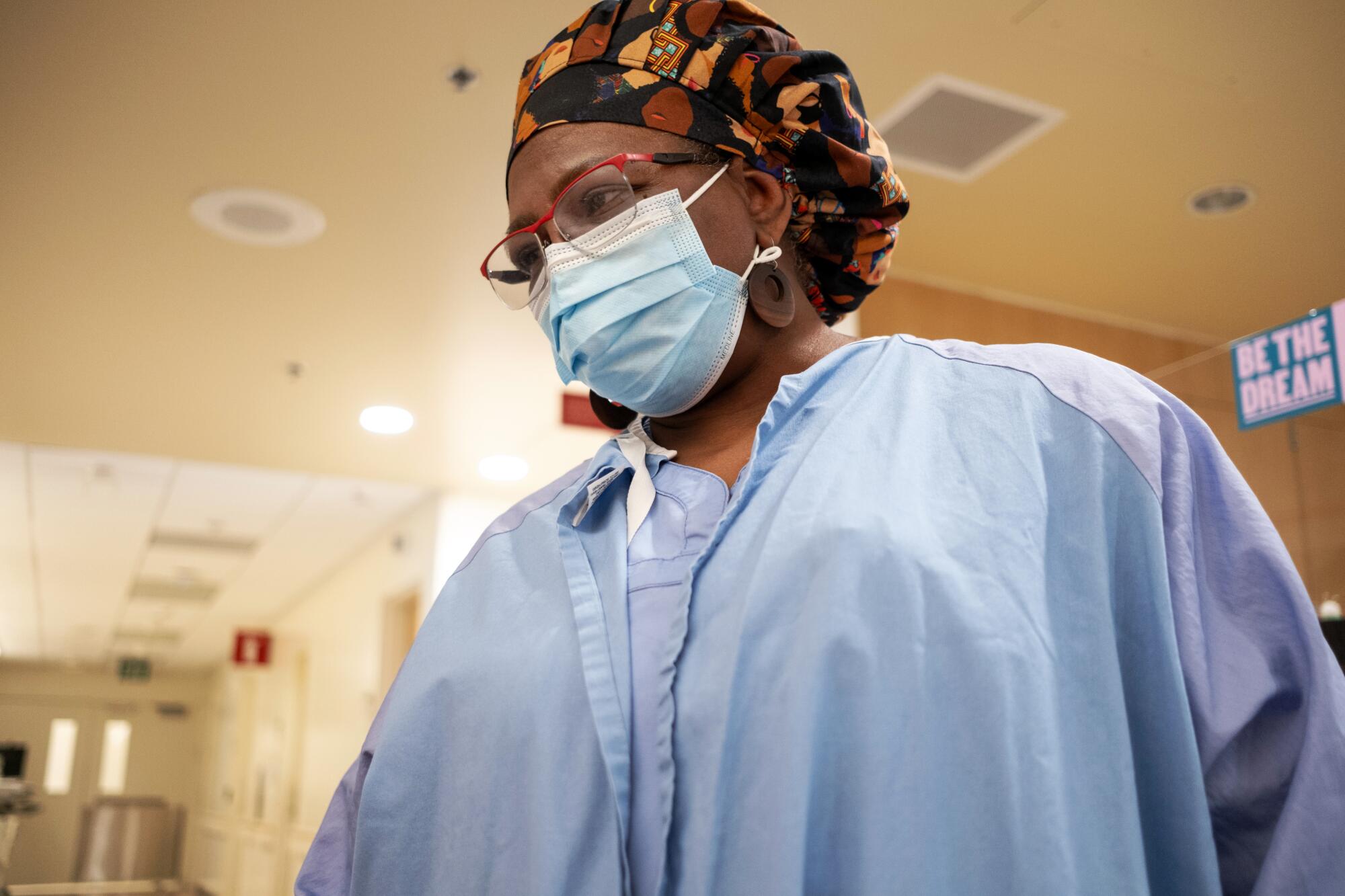
Sojobi has worked as a midwife in the U.S. and Nigeria, where she was born. There, she said, having a midwife was routine for a normal labor, and for many pregnant patients, “the prayer would be, ‘Dear God, don’t let me see a physician.’ Because when you see the physician, that means something is wrong.”
When Sojobi came to the U.S. as a nurse decades ago, she said, midwives were so uncommon in its hospitals that she did not realize they existed here at all. As a nurse attending births in the 1980s, Sojobi said, she cringed when she observed patients being hustled to the operating room if they hadn’t given birth by a set time.
When she was a patient in labor in the U.S., she said, she was frustrated when a clinician gave her a pain medication she didn’t want without any warning, leaving her dizzy and alarmed. “Her heart was in a good place,” Sojobi said, but she was upset to not be asked what she wanted or even informed what was happening.
At her next birth in the U.S., Sojobi said, her doctor wanted her to undergo a C-section because her labor had been progressing slowly. But Sojobi and her baby were faring well. She told her doctor that she was OK with waiting and asked her to come back in four hours. “By the time she came back, I was ready to push.”
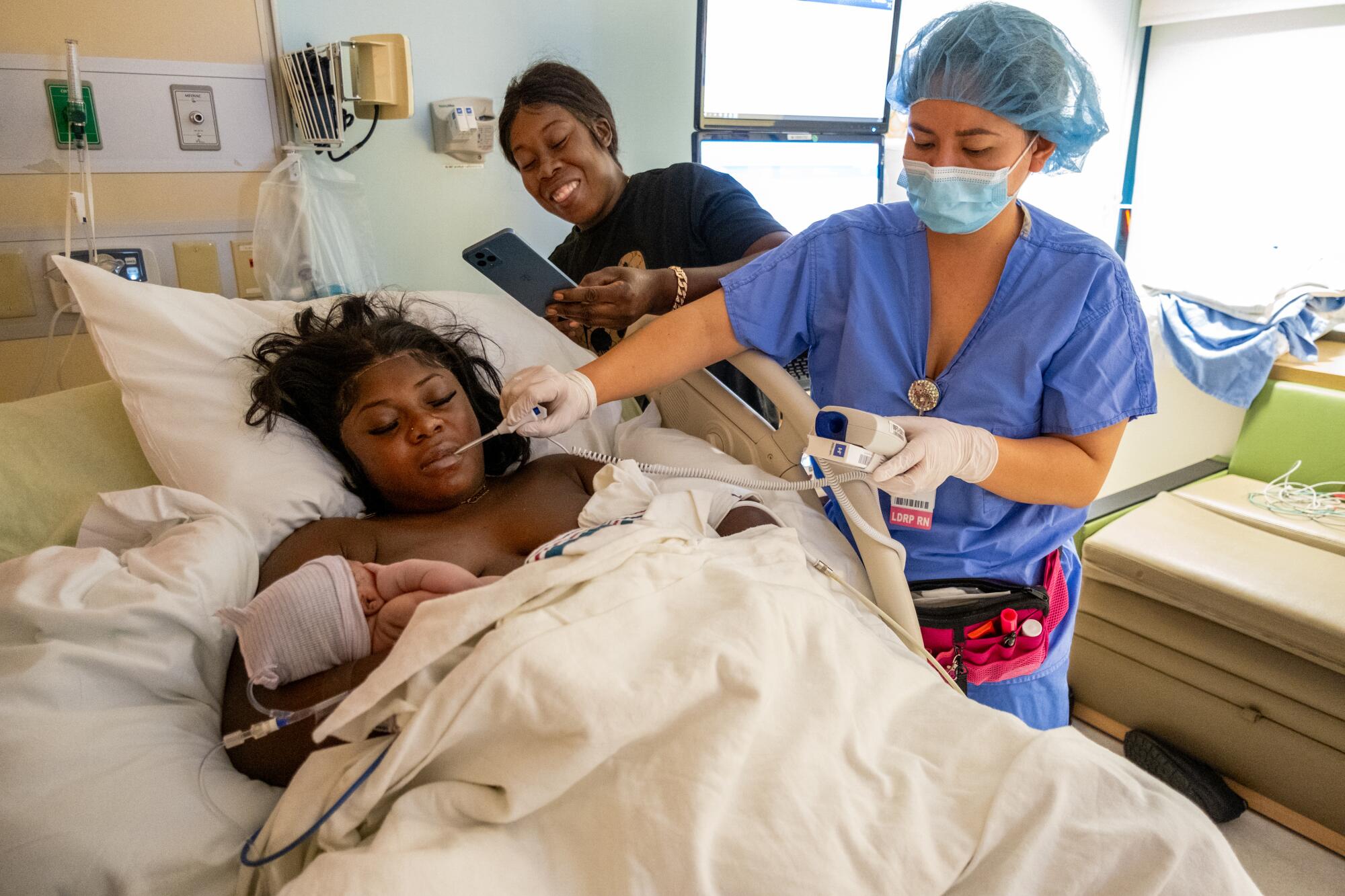
Cesarean sections can save lives, but global studies suggest they have become much more common than is necessary. In the U.S., they account for one-third of births rather than the 15% to 19% researchers have found to be optimal in developed countries. Maternal mortality in the U.S. has been going up rather than down in recent decades, researchers have found — and only worsened amid the pandemic, according to national statistics.
Dan, the obstetrician, said what MLK is doing is allowing the normal process of birth to play out with time, with the medical tools and expertise of physicians at hand if anything veers away from what is normal. As Sojobi kept monitoring and checking on Mckenzie progressing in her labor, Pinches was on site at the hospital and ready to step in if needed. Sojobi pointed out to a reporter that the operating room was nearby, through a set of swinging doors down the hall.
It’s a system that closely matches what South L.A. women told researchers they wanted, when MLK commissioned focus groups in the area. Most said they felt safer giving birth in a hospital, with ready access to technology and medication, but also wanted the care of a midwife or birth doula, the research group found.
“To me this is as perfect as it gets,” Dan said one afternoon, gesturing around the labor and delivery unit.
“But it’s very costly to have this model.”
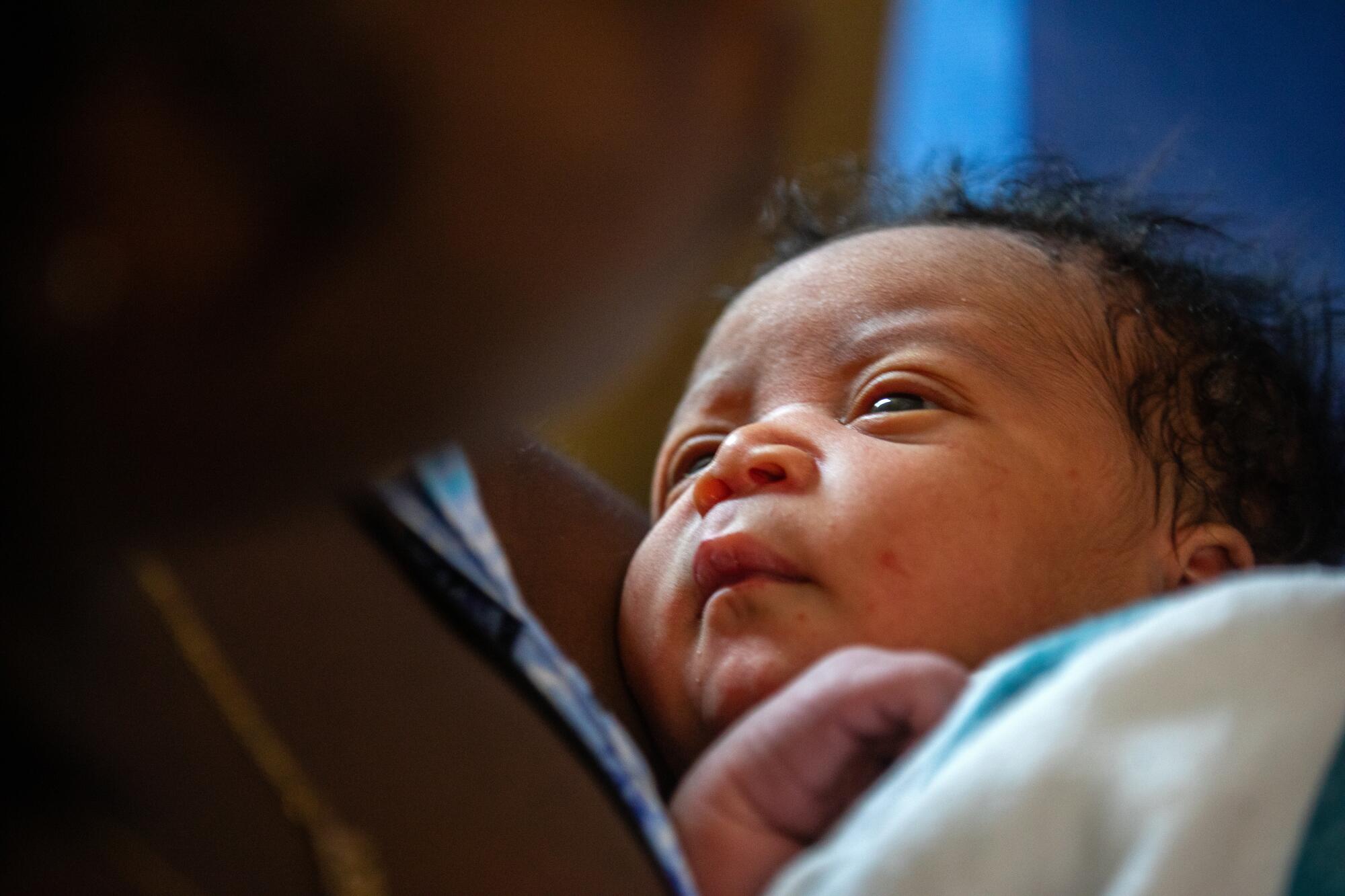
Employing midwives around the clock at MLK costs more than $700,000 annually, in addition to the costs of staffing the unit with other clinicians. The hospital has been under financial strain for years as it tries to survive on reimbursements under Medicaid, which covers the bulk of its patients and pays less than commercial insurers. California recently granted it a $14-million no-interest loan under a program for hospitals in financial distress; MLK officials said they were grateful for the loan, but that it would not plug its annual losses.
Dr. Elaine Batchlor, chief executive of MLK Community Healthcare, estimated that the hospital loses more than $2 million annually on its labor and delivery unit. Across the country, many hospitals have been cutting labor and delivery units entirely in the face of financial pressures. In California, the number of hospitals with birthing services fell by a fifth between 2019 and 2020, according to a March of Dimes analysis — and more have closed their maternity units in the years since.
Labor and delivery units need a lot of staff, which means they typically lose money unless a hospital is delivering thousands of babies annually, Shah said. In areas where more patients rely on Medicaid than commercial insurance, the financial strain is worse. And industry groups say labor costs have risen as hospitals continue to grapple with short staffing after the eruption of the pandemic.
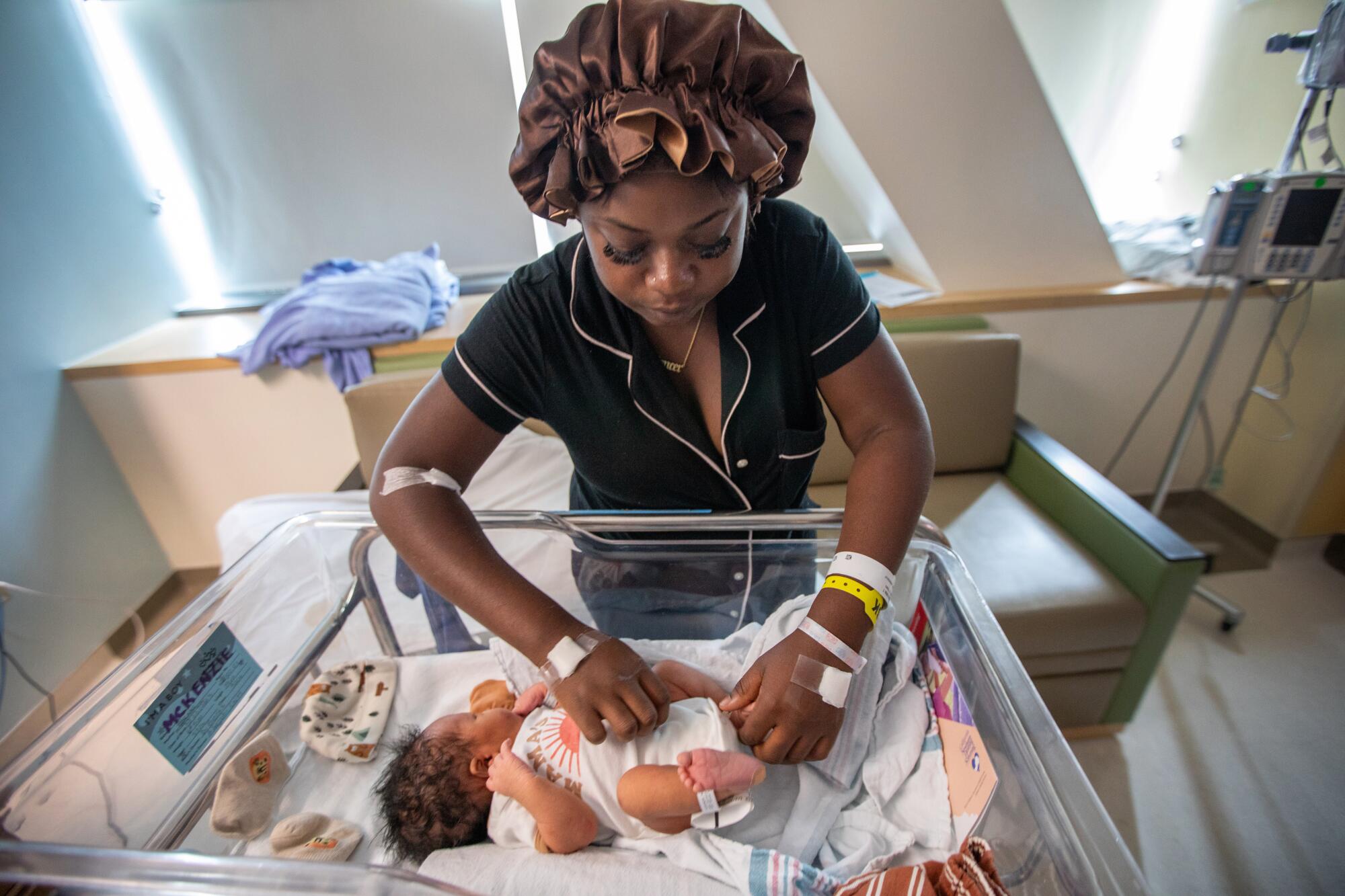
Such closures have hit rural areas especially hard, creating “maternity care deserts” in more than a third of U.S. counties, the March of Dimes found. But urban and suburban areas have also lost birthing units, including in Los Angeles County. In the South Bay, Memorial Hospital of Gardena closed its maternity services three years ago. East of Los Angeles in Montebello, Beverly Hospital announced this spring that it would be halting maternity services and filed for bankruptcy protection.
And in Inglewood, Centinela Hospital Medical Center is closing its unit in October, citing declining births. The decision was announced before the hospital was dealt a $75,000 state fine for faulty practices that led to the death of a woman admitted to its labor and delivery unit.
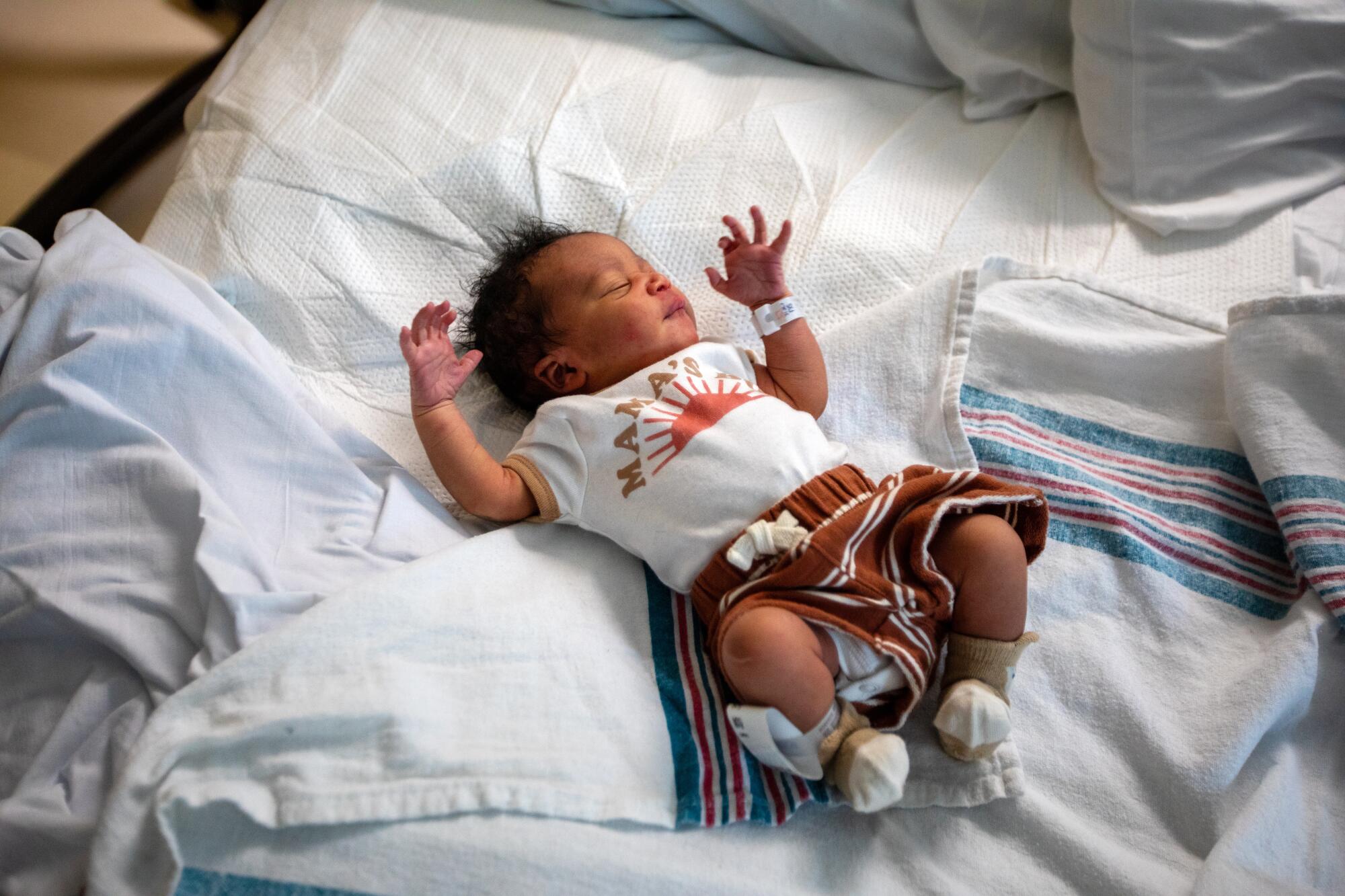
The state did not name the patient, but the date and details of the death matched those of April Valentine, a 31-year-old Black woman who died at Centinela in January. Another mother, a Black woman named Bridgette Burks, died in March at California Hospital Medical Center in the aftermath of a C-section, leaving behind five children and a devastated husband. Again, the state did not name the patient, but investigators found the hospital failed to address signs of a hemorrhage before a birthing patient died that day.
And in July, a federal agency confirmed Cedars-Sinai Medical Center is facing a federal civil rights investigation over how it treats Black women who give birth there, years after the death of Kira Dixon Johnson, whose husband told Congress that he was “smitten with her zest for life.”
Black women in the U.S. were more than 2½ times as likely to die in pregnancy and its aftermath than white women in 2021, national data show. Such disparities exist even for wealthy Black mothers, who are about as likely to die of pregnancy-related causes as the poorest white mothers, according to an analysis of California deaths published in the National Bureau of Economic Research. And Black babies are also at a higher risk of death than white infants.
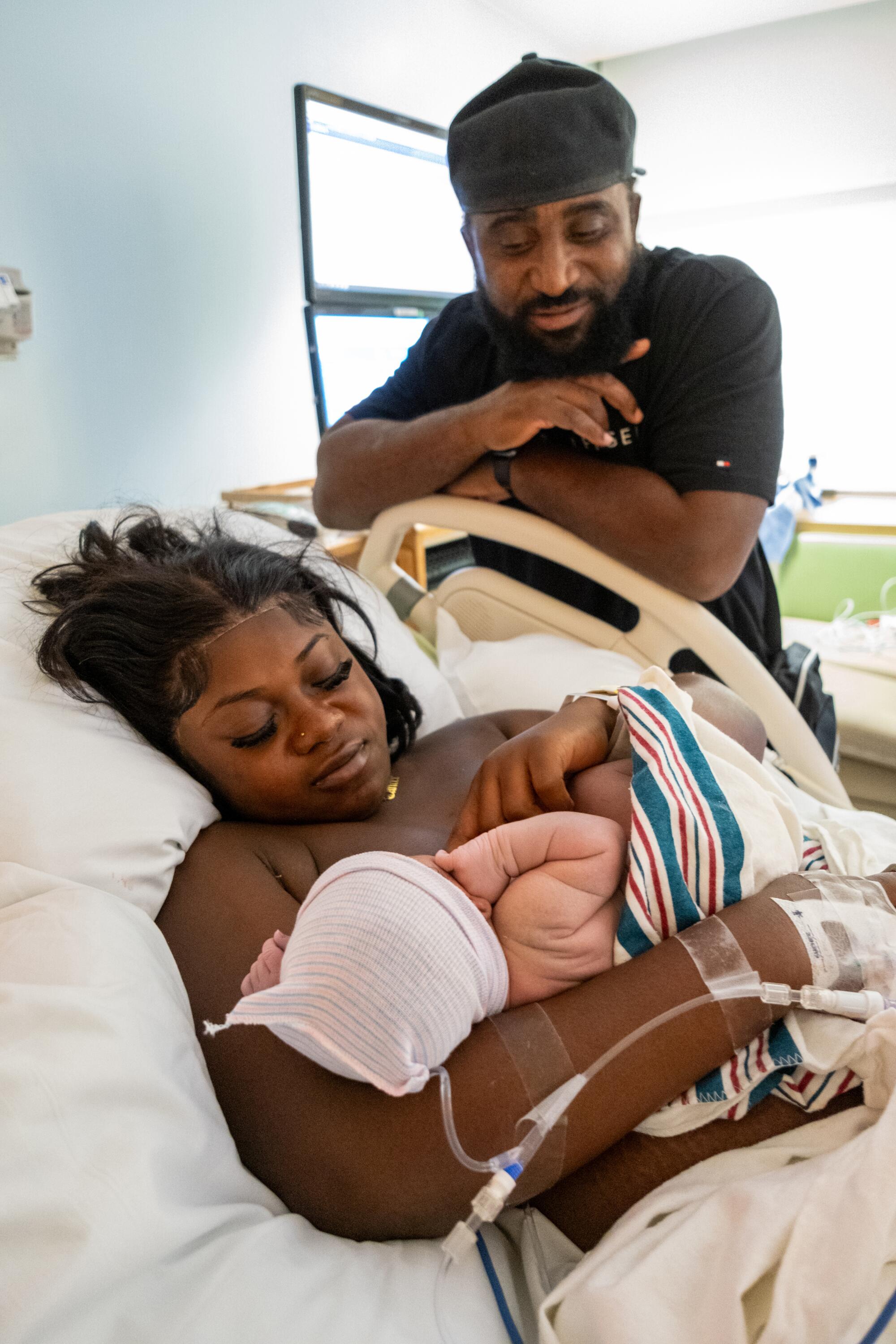
Sojobi said in the South L.A. area, what stands out to her is the fear among her patients, who are mostly Latina and Black. “Women looking at me and saying, ‘Please don’t let anything happen to me.’” At MLK, “from the second the patient walks in the door, they’re shown respect. They’re listened to.”
“We don’t just dictate what’s going to happen to them,” she said.
A United Nations analysis found that Black women are “disadvantaged before, during and after pregnancy” and faulted structural racism and sexism for alarming levels of Black maternal mortality across the Americas. Researchers have increasingly focused on the toll of racism within the healthcare system and the kind of care that Black women receive before, during and after childbirth, as well as the physical effects of chronic stress endured by Black women in the U.S.
Racism “is so deeply embedded in the system that it is not surprising that we have these outcomes,” said Janette Robinson Flint, executive director of Black Women for Wellness, an organization that engages in education and advocacy for the health of Black women and girls. “What is surprising is that we continue to tolerate it.”
The bulk of pregnancy-related deaths in the U.S. are preventable, researchers have found. Across California, more than two dozen people have died since January of complications of pregnancy, childbirth or its aftermath, according to state data from death certificates. California has had lower rates of such deaths than other states, but “I don’t think California can rest on its laurels,” Robinson Flint said. “Why would we accept that it’s OK that women have died giving birth this year?”
When Mckenzie moved to Los Angeles and began looking for a hospital to deliver her baby, she knew she wanted a facility that wouldn’t put her in the position of having to choose between herself and the baby, she said. She toured several hospitals before deciding on MLK, noting its low rates of cesarean sections.
“I wanted a safe delivery. I wanted staff members who listened to me. ... And that’s what they were about.” She was reassured that Sojobi was checking on her constantly, and praised another nurse, Monica Waite, as being “like a mom.”
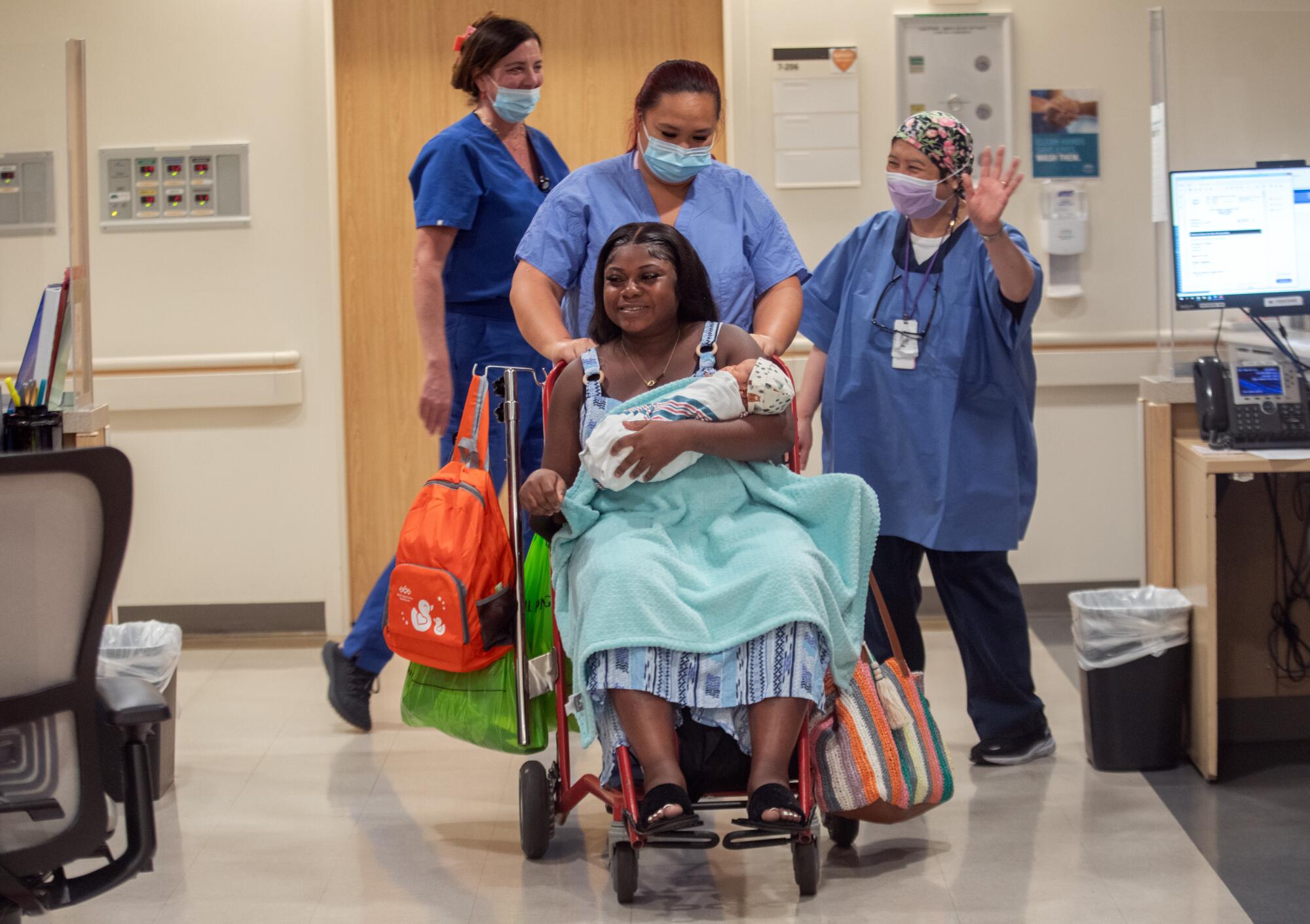
“They really treated me like I belonged,” Mckenzie said. “For Black women, it’s rare to find that.”
Before her son was born, Mckenzie told nurses that she hadn’t picked a name. But shortly after her partner Wayne Morgan cut the umbilical cord, the name sprang readily to her lips: Javen Lucas. Javen, for her brother who had gone missing in Jamaica, where her family is from. Lucas, which means “bringer of light.”
She had long since chosen the name, but wanted to surprise her mother. Her family had lost a boy, “and then God blessed me with another boy,” McKenzie said. “The entire family was in a place of darkness due to my brother being missing.”
“And I do feel like his name — and him — kind of brightened up everything.”
It was just after midnight at MLK Community Hospital. Morgan was leaning over Mckenzie, speaking softly to his son. Tomlinson gazed at the sight of her first grandchild cradled in the arms of her daughter. Sojobi kidded with the new grandmother that she had grown new gray hairs.
“You have done a good job,” Tomlinson told Sojobi with relief.
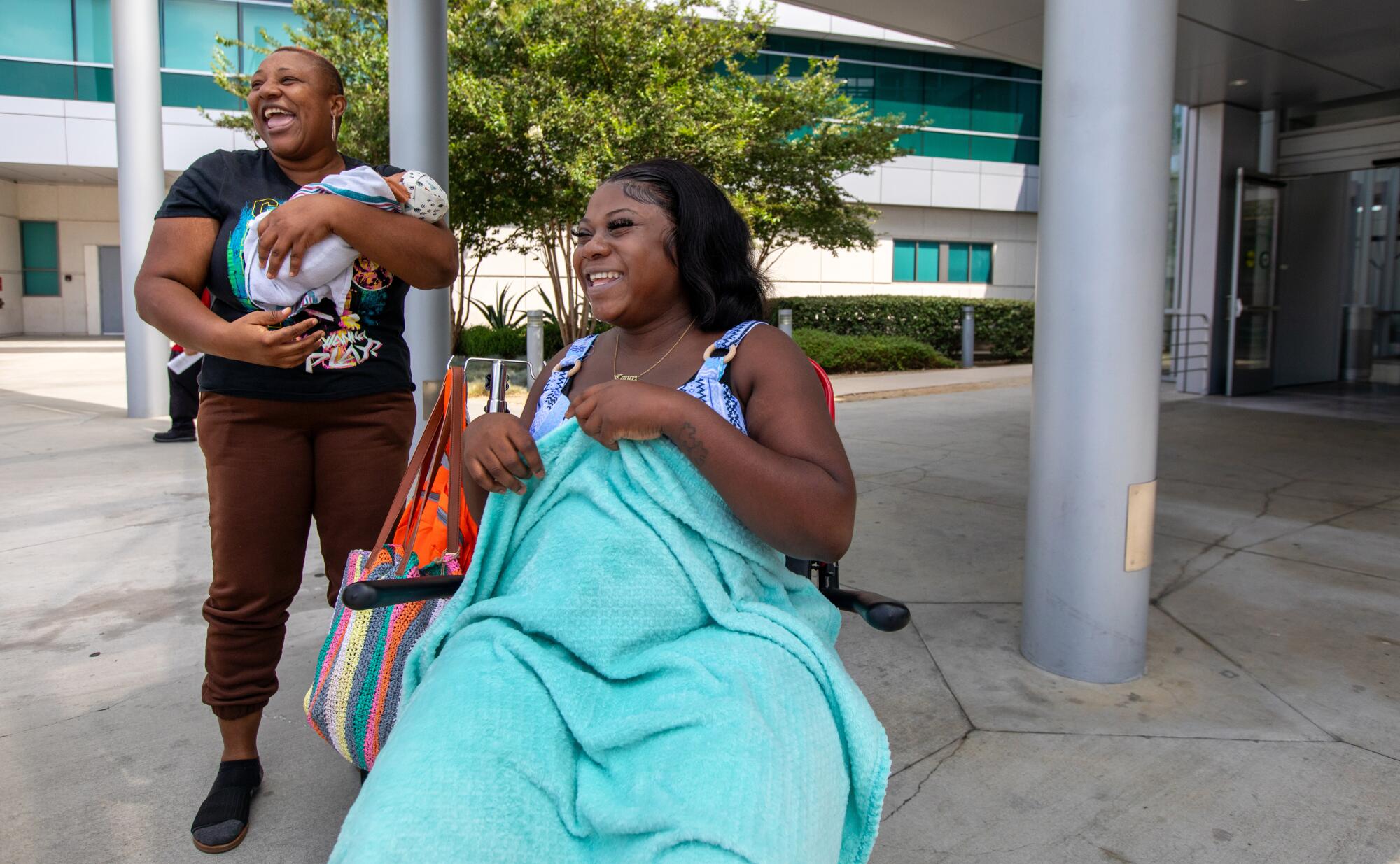
Sojobi later reflected that in other circumstances, Mckenzie might have quickly undergone a C-section after her mother grew concerned. Fear of litigation can weigh on those decisions by doctors, researchers have found. But Sojobi said what made the difference at MLK was time: Time to talk with Tomlinson about her fears and reassure her. Time to shift Mckenzie into different positions to help the baby turn and descend, even with the constraints of an epidural.
“This is what we live for,” Sojobi said, beaming over the red frames of her eyeglasses.
More to Read
Sign up for Essential California
The most important California stories and recommendations in your inbox every morning.
You may occasionally receive promotional content from the Los Angeles Times.











